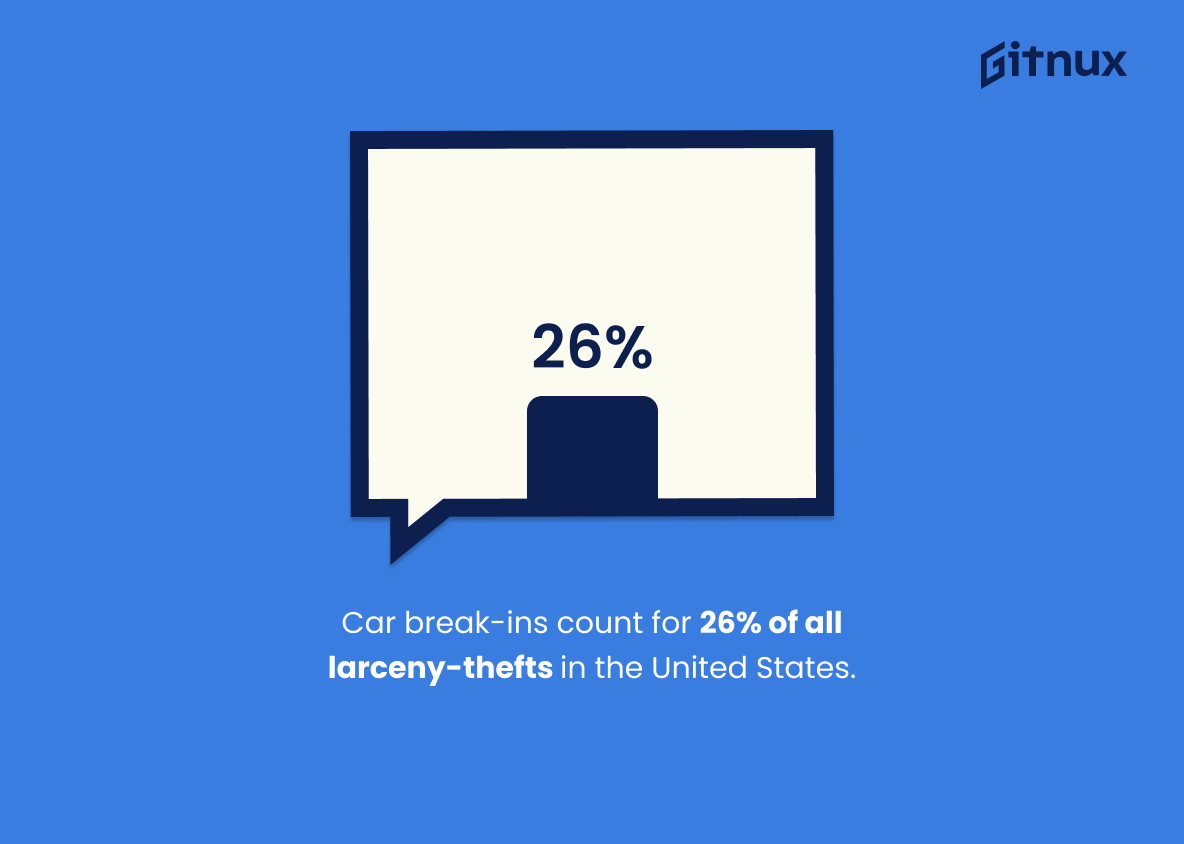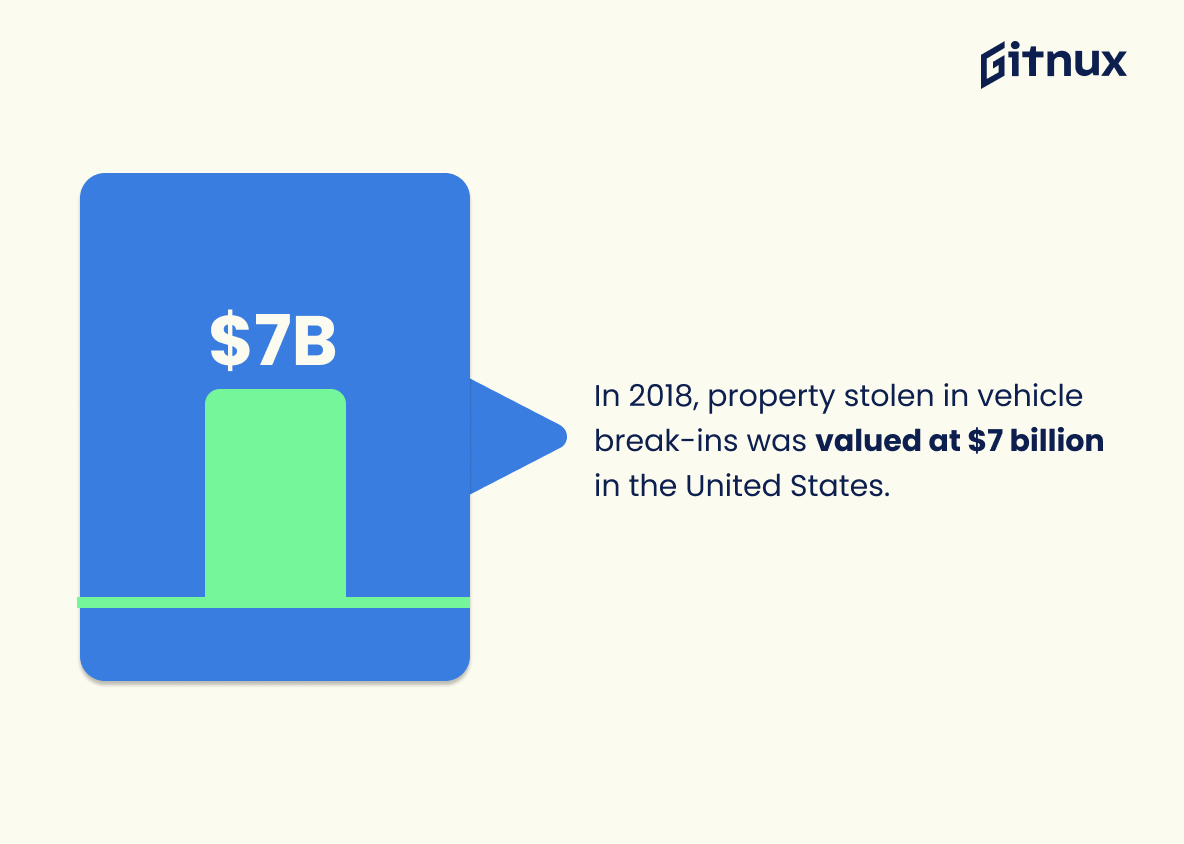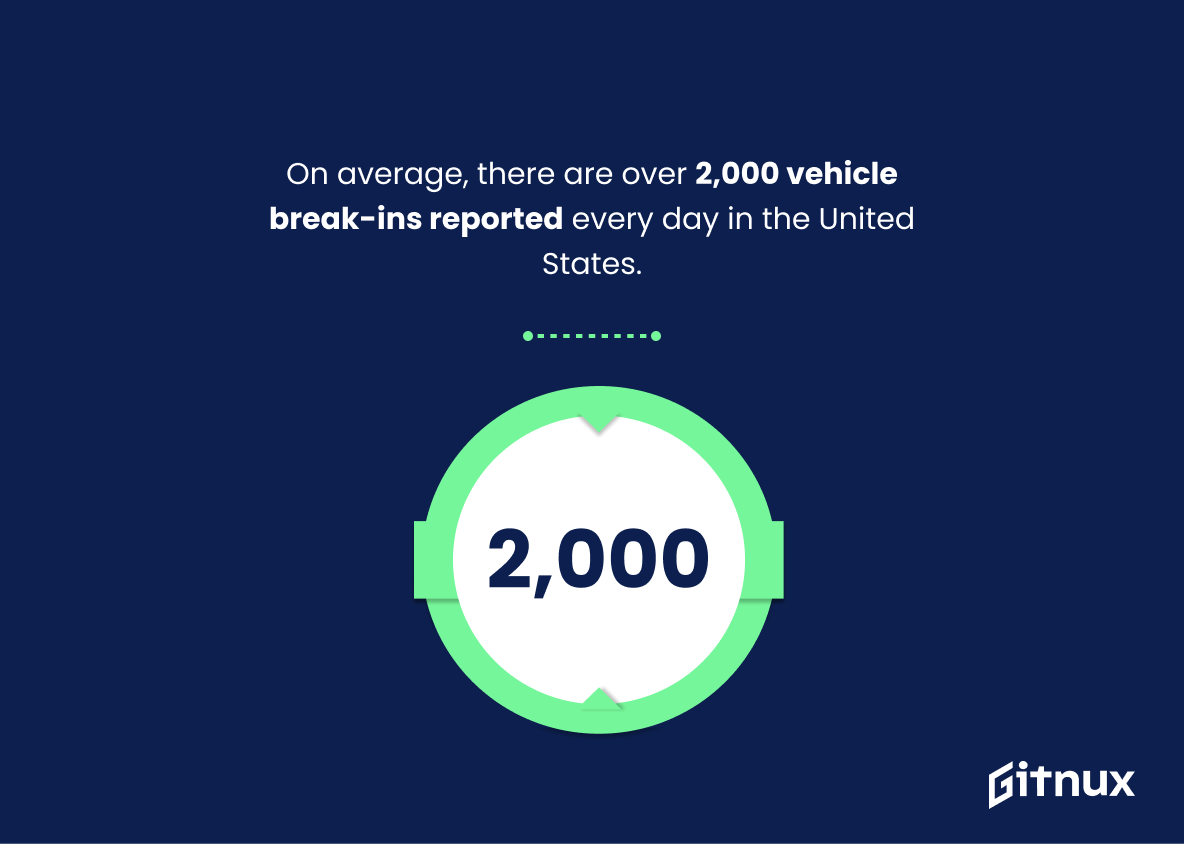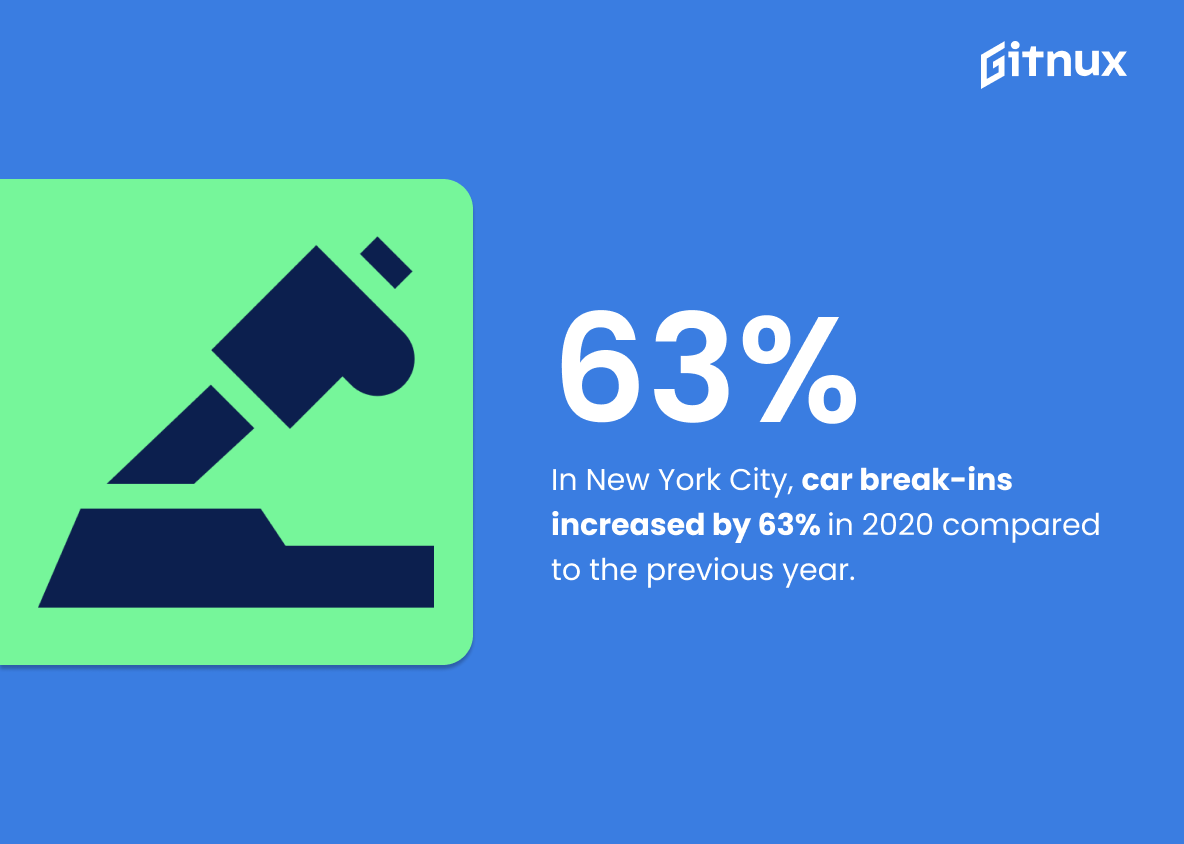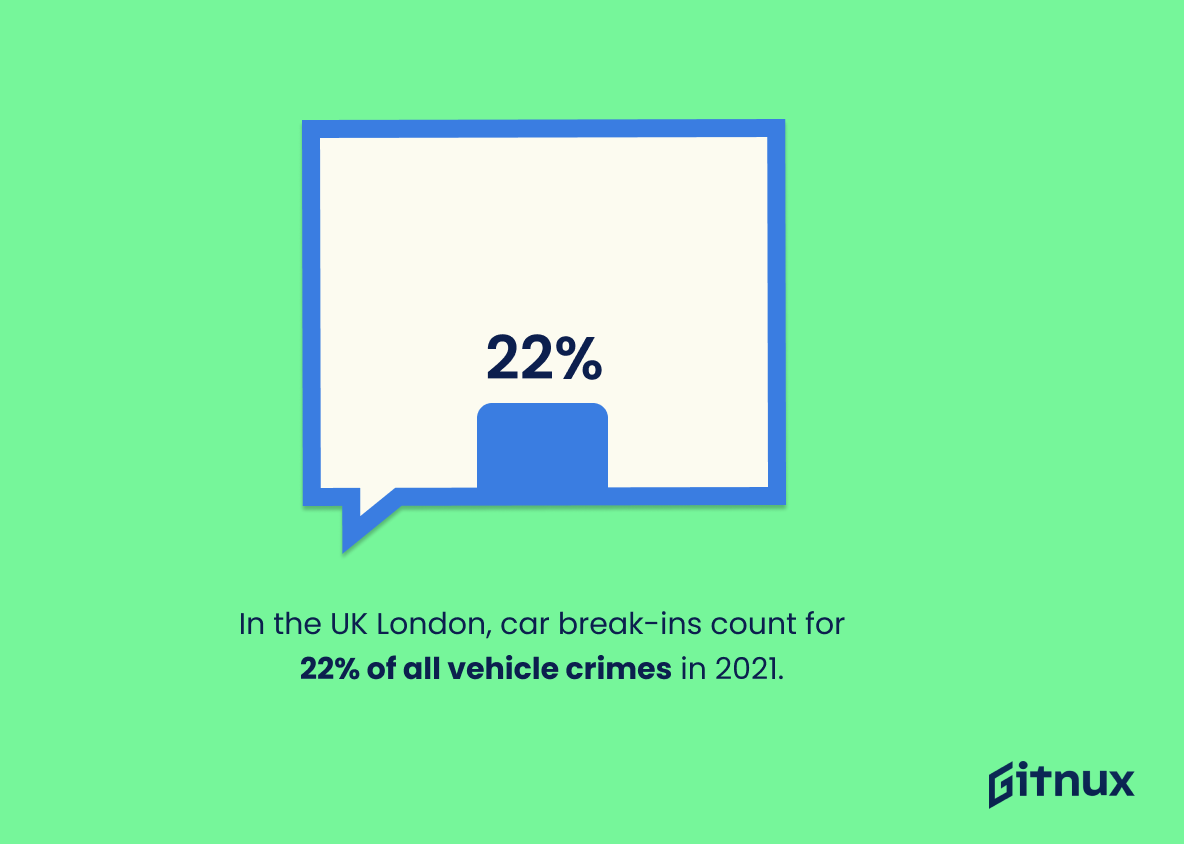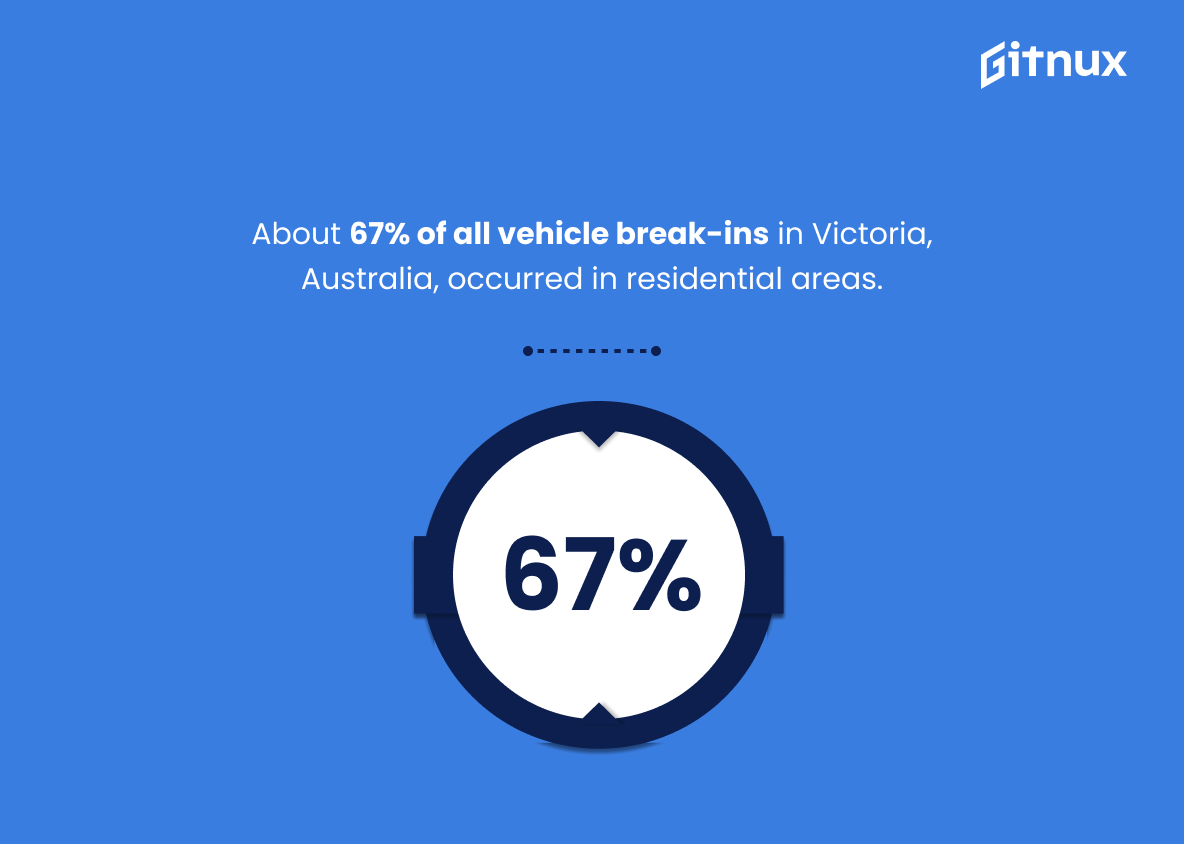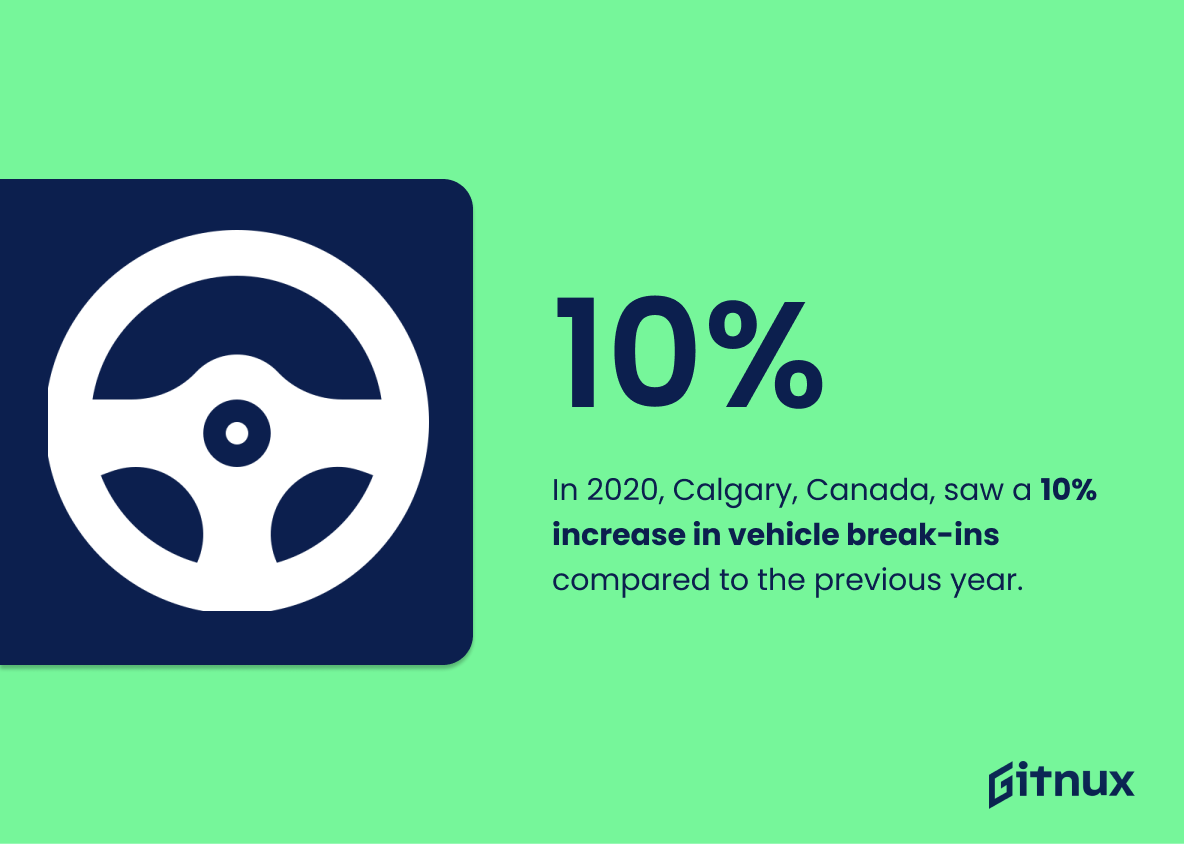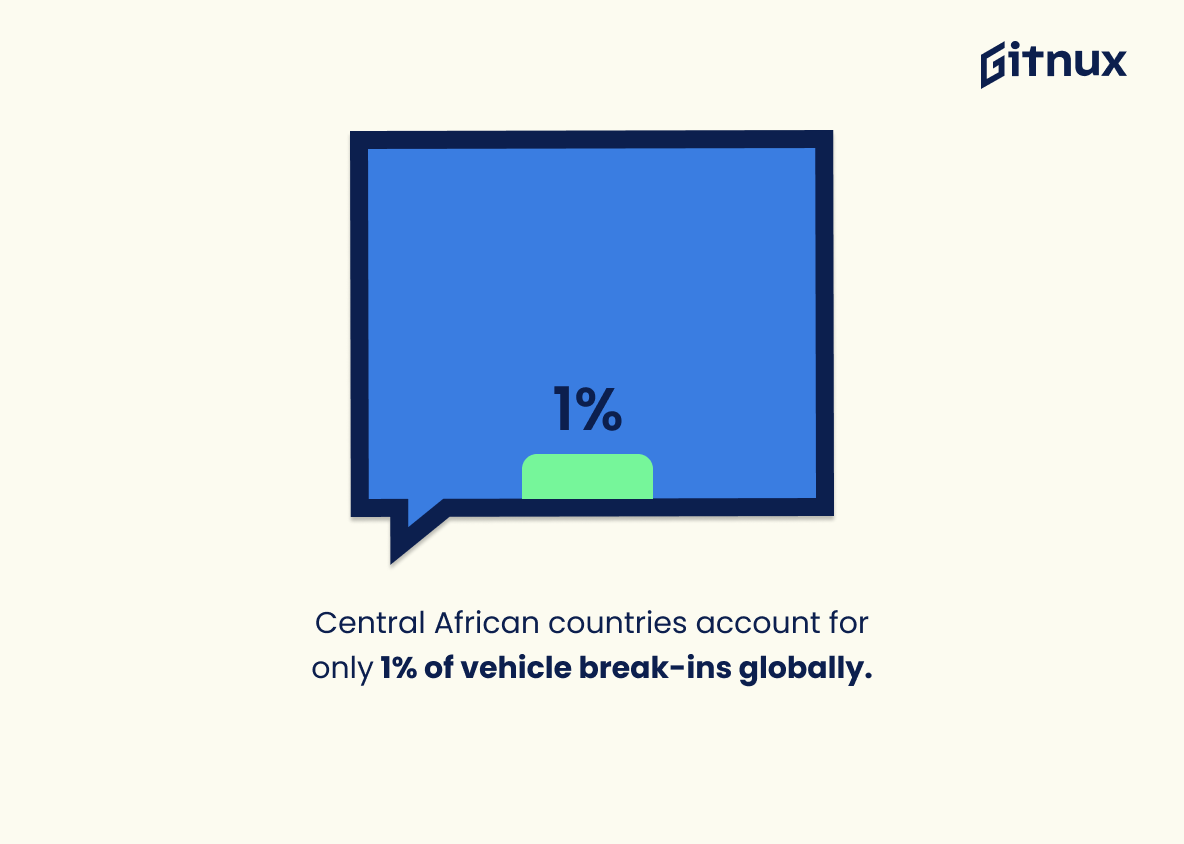A brisk walk to your car, only to find the window broken and belongings missing – an experience no one ever expects. When it comes to car break-ins, the startling rates can, unfortunately, turn this nightmare into reality. This blog post delves into the intricacies of car break-in statistics, casting light on numbers that often lurk in the shadows.
Sit tight as we navigate the narrow alleys of in-depth analysis, regional deterrents to car theft, and potential methods to safeguard your vehicle. As we reveal insights and trends from the numbers, the aim is to instill a deeper understanding of the looming threat and how we collectively, as responsible citizens, can combat this relentless wave of vehicular crimes.
The Latest Car Break-Ins Statistics Unveiled
Approximately 1.85 million car break-ins occurred in the United States in 2019.
In the landscape of car break-in statistics, the figure of 1.85 million car break-ins in the United States in 2019 stands as a stark billboard on the interstate of crime data. This digit, denoted in millions, isn’t merely a mundane number, but a stern wake-up call depicting the gravity and frequency of vehicle-related thefts across the country.
A vibrant portrayal of this magnitude reiterates the pertinence of car security measures and foreshadows an increasing need for innovative anti-theft technologies. It is this daunting figure that acts as a compass guiding discussions and strategic decisions about crime prevention, law enforcement focus, and public awareness campaigns. Essentially, it underscores the clarion call that ‘prevention is better than cure’ when approaching car break-ins.
Car break-ins count for 26% of all larceny-thefts in the United States.
Shining a spotlight on the alarming reality, the revelation that car break-ins account for over a quarter of all larceny-thefts in the United States is one that commands attention. In the panorama of criminal scenarios painted by this blog post on Car Break-In Statistics, this figure takes center-stage. It serves as an unambiguous signpost, highlighting a pervasive threat to vehicular security and calling readers to a greater awareness of their car protection measures.
As we peel back the layers on theft statistics, this significant 26% underscores the urgency of implementing effective anti-break-in strategies for vehicle owners. No longer just numbers in a statistical report, this evolving crime statistic plunges us into a dialogue on the pervasiveness of opportunistic crime in our society and how best to safeguard ourselves and our property.
San Francisco tops the list of US cities with the most car break-ins with over 30,000 cases reported in 2019.
Highlighting San Francisco’s towering figure of 30,000 car break-ins in 2019 illuminates a glaring narrative of car theft vulnerability laced within the fabric of America’s cities. In this blog post regarding Car Break-Ins Statistics, San Francisco’s untenable situation offers a stark diving board into the deep pool of nationwide data, facilitating a broader understanding.
This powerful narrative reinforces the chilling urgency and necessity for effective measures and solutions to address this issue. Serving as an alarm bell, it vividly communicates the stark reality that no city, no matter how advanced, is immune to the scourge of car break-ins.
In 2018, property stolen in vehicle break-ins was valued at $7 billion in the United States.
Highlighting the staggering figure of $7 billion worth of property stolen during vehicle break-ins in the United States demonstrates the enormity of this issue. It’s not a trivial number; it helps to paint a vivid picture that underscores the financial implications and the emotional toll of such events.
When readers comprehend the vast scale of this problem, they may be prompted to take precautionary measures to mitigate their risk. Moreover, showcasing such substantial economic loss can stimulate dialogues for better security systems and help policymakers realize the urgency for improved theft deterrence measures.
On average, there are over 2,000 vehicle break-ins reported every day in the United States.
Leveraging the headline figure, “Over 2,000 vehicle break-ins reported daily in the United States”, paints a vivid and alarming picture for readers. It spotlights the magnitude of the issue, urging car owners to comprehend the urgency and widespread nature of vehicle break-ins.
This sobering statistic empowers a call to action, demonstrating the immediate need for increased security measures. Equally important, it underscores the gravity of the subject matter in our blog on Car Break-Ins Statistics providing the impetus for vigorous discussion, informed decision-making, and proactive problem-solving.
In New York City, car break-ins increased by 63% in 2020 compared to the previous year.
With a towering rise of 63% in car break-ins in New York City during 2020, compared to the year prior, this alarming figure serves as the very pulse that quickens the heartbeat of our discussion on Car Break-Ins Statistics. It denotes not just an uptick, but a steep, concerning surge that might ignite further conversations on safety, security measures, and law enforcement efficiency.
As the City That Never Sleeps witnesses an unsettling spike in such crimes, it inherently contextualizes, and adds critical weight to our ongoing scrutiny of nationwide data trends. A statistic of this nature, therefore, accentuates the necessity for proactive policies, reinforces the importance of comprehensive insurance coverage, and ultimately guides potentially at-risk vehicle owners navigating urban terrains.
In the UK London, car break-ins count for 22% of all vehicle crimes in 2021.
Shining a spotlight on the staggering statistic of car break-ins in the bustling capital of the UK, we find that London, amidst its vibrant city lights and iconic landmarks, serves as the terrain for 22% of all vehicle crimes in 2021. Manifesting in this figure is the stark reality that despite its charms, London grapples with a notable share of vehicle-related misdemeanors.
On the canvas of a blog post on Car Break-Ins Statistics, this piece of data paints a vivid picture of the geographical distribution and magnitude of the issue, reinforcing the importance of awareness, preventable measures, and policy reforms. Remember, every statistical brushstroke helps paint a richer, more comprehensive image of the situation at hand.
In 2020, Los Angeles saw a nearly 35% increase in vehicle break-ins compared to the previous year.
Submitting such a striking percentage heightens the gravity of the matter; the 35% surge in vehicle break-ins in Los Angeles in 2020 underscores a rampant issue, which not only highlights the waning safety of that city but also provides a comparison point to similar statistical data across other cities. The incorporation of this fact in a blog post about Car Break-ins Statistics enables readers to fully comprehend the severity of the situation.
Alongside this, it indicates a possible trend or change in criminal behavior that can facilitate in forming strategies to combat this issue. Consequently, this statistic serves as a potent instrument in painting a realistic portrayal of the car break-in scenario.
In Ireland, there is an average of 12 car break-ins reported each day.
Diving into the heart of Ireland’s car break-in data, we unearth a startling factoid. As if scripted by a modern day Hitchcock, everyday an average of 12 vehicles fall prey to break-in incidents, turned from beloved transport into crime scenes. This grim tale, though not exclusive to Ireland, encapsulates the magnitude of the challenge at hand.
By serving up these hard numbers, we strip away any illusion of rarity or improbability encasing the occurrence of car theft. It conjures a vivid understanding of the urgency and prevalence of the issue, and underscores the stark reality that cars, irrespective of location, are susceptible.
In essence, the statute is not merely a figure but a wake-up call. It propounds discussion on precautions, possibly sparking advocate actions for better car security systems, ultimately pushing everyone involved to work towards deflating this statistic. This figure uncovers a facet of daily Irish life, setting the stage for us to delve deeper into factors contributing to these incidents and the subsequent steps for prevention. This is the car break-in narrative in numbers, unfolding one statistic at a time.
About 67% of all vehicle break-ins in Victoria, Australia, occurred in residential areas.
Delving into the realm of car break-ins statistics permits a startling revelation. A significant proportion, precisely 67%, of all vehicular break-ins in Victoria, Australia, transpire in residential areas – home turf if you will. This figure is of critical importance as it instinctively drives us to revise our perception of the safety of residential areas, typically considered more secure. Thus, it redefines the focus areas of crime preventive measures. Our understanding of risk zones, security protocols, and insurance policies become all the more nuanced with this data.
This statistic is also a prelude for the community to foster a safer environment through increased vigilance and homeowners to bolster their car security. So the next time you park your vehicle in your driveway, remember to lock it and double check. After all, the numbers don’t lie, they guide us towards a more informed state of being.
In 2020, Calgary, Canada, saw a 10% increase in vehicle break-ins compared to the previous year.
Diving into the depths of the car break-ins statistics, one cannot overlook the unexpected surge of incidents in Calgary, Canada, in 2020. Reflective of a troubling 10% spike from the previous year, this piece of data paints an alarmingly vivid picture of growing insecurity on the city streets.
It provides the readers a pinpointed insight into geographical hotspots with escalating crime rates, urging them to sharpen their security measures. Furthermore, it illuminates an emerging narrative that underscores the need for stringent law enforcement policies and public awareness education to curb such activities.
Central African countries account for only 1% of vehicle break-ins globally.
Peeling back the layers of global car break-in statistics, one finds a surprising element: Central African countries contribute merely 1% to this global menace. This fact subtly emphasizes the geographical variations in crime rates and also illuminates the relative safety of these nations in this particular context.
Additionally, it allows auto-owners, travelers, and global security agencies to identify areas of higher risk, reallocate resources, and implement effective strategies accordingly. Hence, this unexpected twist in data encourages a deeper understanding of the global pattern amidst the discourse on Car Break-Ins statistics.
Conclusion
In conclusion, car break-ins are unfortunately a common occurrence in many parts of the world, with several cities showing alarmingly high rates. By understanding the statistics, recognising the danger zones, and taking preventive actions, you can significantly lower your risk of becoming a victim. Nevertheless, it’s important not to live in fear.
Car break-ins, like any other crimes, are a matter of opportunity. By staying vigilant, upgrading your vehicle’s security, and never leaving valuables unattended, you can make your car a less attractive target for thieves. Remember, awareness is our best tool in combating this type of crime.
References
0. – https://www.www.statista.com
1. – https://www.www.bjs.gov
2. – https://www.www.securelist.com
3. – https://www.ucr.fbi.gov
4. – https://www.www.garda.ie
5. – https://www.www.nydailynews.com
6. – https://www.www.latimes.com
7. – https://www.www.crimestatistics.vic.gov.au
8. – https://www.calgary.ctvnews.ca
9. – https://www.abc7news.com

